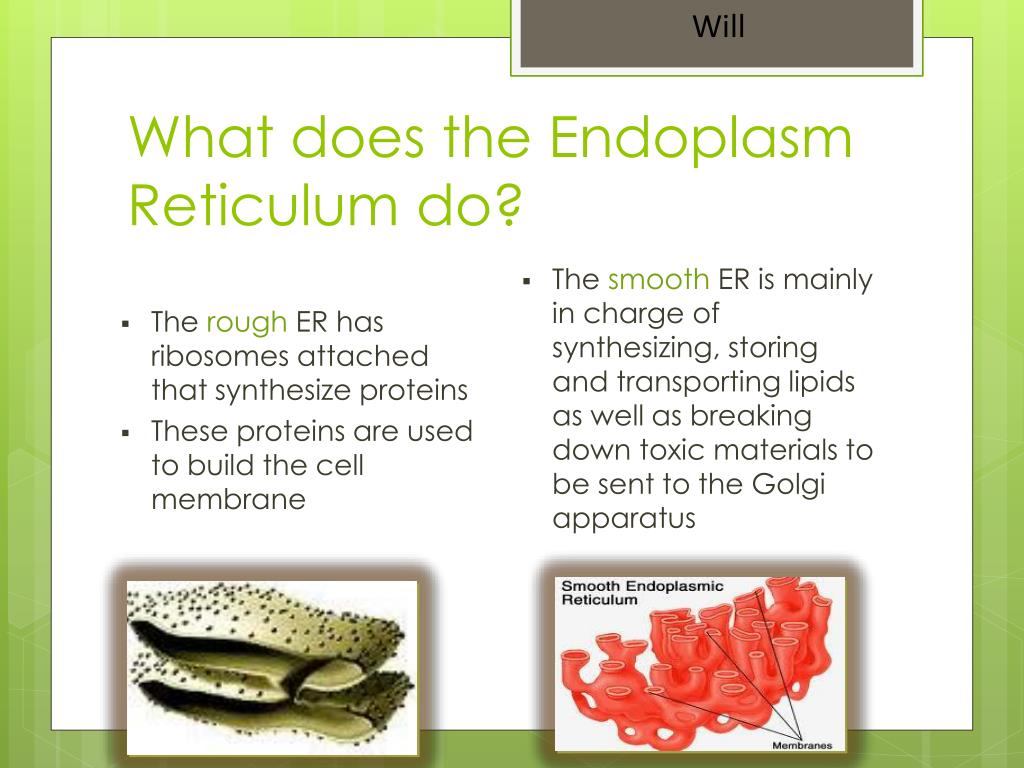

Lysosomes are formed by the fusion of vesicles that have budded off from the trans-Golgi. In plants and fungi, lysosomes are called acidic vacuoles. This environment activates the hydrolases and confines their destructive work to the lysosome. The lumen of a lysosome is more acidic than the cytoplasm.

These membrane-bound organelles contain a variety of enzymes called hydrolases that can digest proteins, nucleic acids, lipids, and complex sugars. Lysosomes break down macromolecules into their constituent parts, which are then recycled. Later, as vesicles of membrane lipids and proteins bud off from the trans-Golgi, they are directed to their appropriate destinations - either lysosomes, storage vesicles, or the plasma membrane (Figure 2). At each workstation along the assembly line, Golgi enzymes catalyze distinct reactions.

Molecules then travel through the Golgi apparatus via vesicle transport until they reach the end of the assembly line at the farthest sacs from the ER - called the trans-Golgi. Vesicles that bud off from the ER fuse with the closest Golgi membranes, called the cis-Golgi. In electron micrographs, the Golgi apparatus looks like a set of flattened sacs. The carbohydrates that the Golgi attaches to membrane proteins are often quite complex, and their synthesis requires multiple steps. Many Golgi reactions involve the addition of sugar residues to membrane proteins and secreted proteins. The Golgi apparatus functions as a molecular assembly line in which membrane proteins undergo extensive post-translational modification. When signaled by the cell, theseįuse with the plasma membrane and release their contents into the Any proteins that areįor a lysosome are delivered to the lysosome interior when the vesicleĬarries them fuses with the lysosomal membrane and joins its contents.Ĭontrast, the proteins that will be secreted by a cell, such as insulinĮPO, are held in storage vesicles. Proteins are carried in the lumens of vesicles. The proteins that are synthesized in the ER have, as part ofĪmino acid sequence, a signal that directs them where to go, much likeĪddress directs a letter to its destination. Vesicles that have released their cargo return via the reverseĭirection. Of synthesis to the Golgi apparatus and next to a cell's lysosomes or Occurs in both directions the forward direction takes vesicles from the

Next set of membranes, where they fuse with these structures. Pinch off of one set of membranes and travel along microtubule tracks to To their final destination in membrane-bound vesicles. Therefore, the membraneĪnd proteins that are synthesized in the ER must be transported through The hormones insulin and erythropoietin (EPO) are both examples of vesicular proteins.ĮR, Golgi apparatus, and lysosomes are all members of a network ofīut they are not continuous with one another. The proteins that will be secreted by a cell are also directed to the ER during translation, where they end up in the lumen, the internal cavity, where they are then packaged for vesicular release from the cell. Thus, by the time the protein achieves its final form, it is already inserted into a membrane (Figure 1). Translation then recommences after the signal sequence docks with the ER, and it takes place within the ER membrane. The signal sequence stops translation and directs the ribosomes - which are carrying the unfinished proteins - to dock with ER proteins before finishing their work. Here, future membrane proteins make their way to the ER membrane with the help of a signal sequence in the newly translated protein. Similarly, transmembrane proteins have enough hydrophobic surfaces that they are also inserted into the ER membrane while they are still being synthesized. This happens in part because the lipids are too hydrophobic to dissolve into the cytoplasm. This organelle contains the enzymes involved in lipid synthesis, and as lipids are manufactured in the ER, they are inserted into the organelle's own membranes. Membranes and their constituent proteins are assembled in the ER.


 0 kommentar(er)
0 kommentar(er)
